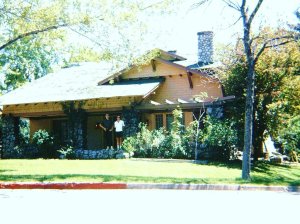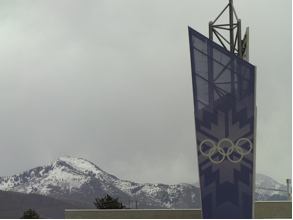by BONNIE ADAMSSON-VORWALLER
Introduction:
On March 19, 2003, U.S. troops invaded Iraq. The initial siege lasted only 41 days, but it marked the beginning of a protracted and acrimonious struggle that would come to be referred to by military analysts as a “quagmire,” (Warnick) and by some journalists around the world as “Viet Nam-like.” (Dalleck) The comparisons were unavoidable. Urged on by U.S. President George W. Bush, who insisted “God told me to end the tyranny in Iraq,” U.S. troops invaded a country that had not made a single military strike against the U.S. (MacAskill) The Iraqi people also had not requested any humanitarian intervention. As armed U.S. troops rushed into Iraq to “bring them Freedom” (Artyukov) in what Bush called a “preventive war,” (Klein) an internal crisis and then collapse resulted, forcing nearly 2 million Iraqis from their homes and, ultimately, from their country. This event in the Middle East was about to have significant consequences for the people of the State of Utah.
Findings:
Hundreds of thousands of Iraqi refugees flooded into neighboring Jordan in 2004. (Amos) Forty percent of Iraq’s middle class fled their homes and their businesses at the rate of nearly 3,000 Iraqi refugees per day seeking safety in Jordan and Syria through December 2006. (Lockhead) In Syria alone, some 50,000 Iraqi girls and women, many of them widows, were forced into prostitution just to survive. (Hassan)
Most Utahns remained unaware of the massive upheaval occurring on the other side of the world. The Deseret Morning News in Salt Lake City, Utah, first began to track the building pressure in the January 3, 2007, issue. In the editorial “Allow more Iraqis into U.S.,” the newspaper reported that, according to the New York Times, 8,100 Iraqi refugees had asked for asylum in western nations in 2006. According to the editorial, Senator Edward M. Kennedy of Massachusetts was preparing to take over the subcommittee for immigration, border security and refugees. The Deseret Morning News editor suggested that Kennedy focus first not on Mexico, but on the Middle East and particularly Iraq. The editorial pointed out that immigrants historically have brought diversity as well as economic benefits to the U.S.
The Deseret Morning News continued its coverage of the Iraqi refugee problem in the February 15, 2007, edition. Middle Eastern countries bordering Iraq, especially Syria and Jordan, were being overwhelmed by the hundreds of thousands of Iraqi war refugees flooding across their borders.
U.S. government and State Department officials announced on February 14 that up to 7,000 Iraqi war refugees would be allowed into the U.S. effective immediately. The U.S. decision was in response to the proposal of the Refugee Crisis in Iraq Act of 2007. In an effort to stabilize the region, the United States Senate would later pass the Refugee Crisis in Iraq Act of 2007 into law on June 19, 2007. The brief Deseret Morning News story, headlined “Iraqis in the U.S. cheer war-refugee clearance,” was picked up from the AP newswire and featured interviews with Iraqis in Nashville and Chicago. One paragraph, consisting of a single sentence, offered an almost prophetic glimpse: “In several cities with Iraqi communities, officials promised to welcome the newcomers.”
On April 17-18, 2007, an international conference on Iraqi displacement took place in Geneva, Switzerland. The conference approved a Strategic Framework for Humanitarian Action in Iraq. The Salt Lake Tribune had still not picked up the story when the Deseret Morning News ran its first feature-length article on the Iraqi refugee issue on May 15, 2007. The article, bylined by Elaine Jarvik, was headlined “Dozens of refugees Utah-bound in fall.” Jarvik wrote, “Several dozen of the estimated 2 million Iraqis who have fled to neighboring countries since the U.S. invasion will probably begin arriving in Utah some time next fall, according to local refugee resettlement workers.” Jarvik interviewed local refugee coordinators including Aden Batar, director of immigration and resettlement at Catholic Community Services, and Patrick Poulin, resettlement director of the International Rescue Committee. She also quoted Cassandra Champion of Lutheran Immigration and Refugee Services headquartered in Maryland, underscoring the local, national and international aspects of the developing story.
The Salt Lake Tribune ran its first article about the Iraqi refugee issue May 16, 2007. In her article, “Iraq war refugees heading to Utah,” reporter Jennifer W. Sanchez wrote, “The UNHCR [United Nations High Commisioner for Refugees] also estimated that 40,000 to 50,000 Iraqis are fleeing their homes each month.” Of those, only a few dozen were expected to make their way to Utah. Sanchez interviewed Poulin and Batar. Poulin described the refugee relocation process as “very slow” and said the Iraqi refugee problem was “getting worse and worse.” He said many Middle Eastern countries that were dealing with the refugees couldn’t afford or handle the population influx. And Batar told Sanchez that his agency was going to work on informing the whole Salt Lake City community about respecting the new refugees. “We need to educate the community because we don’t need any backlash,” Batar said. “They need to start a new life here because of the Iraq war. It’s not safe for them to go back home.”
At that point, the “tipping point,” the debate began. A series of feature articles, opinion editorials and letters to the editor followed in both the Salt Lake Tribune and the Deseret Morning News. Many Utahns were in favor of this new group of “immigrants.” Some were cautious. A few were vehemently opposed.
As the specter of Iraqi refugees fleeing to Utah loomed, support for the war in Iraq began to wane. On November 2, 2007, the Salt Lake Tribune ran a news feature headlined: “Even in Republican Utah, support for Iraq War and Bush fading.” On November 9, the Tribune ran an article announcing: “Utah to open office to aid refugees.” Tribune writer Sheena McFarland reported, “A new Refugee Service Office will open in the Department of Workforce Services by the time the Legislature begins.” The Refugee Working Group, convened by Governor Jon Huntsman, Jr., and Salt Lake County Mayor Peter Corroon, announced that the new Refugee Service Office would open by January 2008. Huntsman said refugees would continue to come to the United States and to Utah “because we are a land of opportunity and hope, and that will always attract those fleeing oppression.”
Newly appointed Utah Refugee Service Office Director Gerald Brown wrote in Refugees 101, “The Utah Refugee Service Office was created as a result of the community’s demand for better support and services for refugees resettled in Utah.” Brown pointed out that refugees are survivors who deserve our help and support. “Giving refugees assistance in the beginning of their new lives in the U.S. ensures productive, contributing citizens for the future,” Brown wrote. “The best thing that a person can do for refugees is to befriend them.” Huntsman described the office as “a clearinghouse of information for the 20,000 refugees currently living in Utah and specifically for newly arrived refugees.”
Conclusions:
United States foreign policy resulted in nearly 2 million Iraqis being forced to flee from their homes. While at first the conflict in the Middle East did not directly affect most of the residents of Utah, over time more and more Iraqi refugees sought asylum in the United States and, in some cases, in Utah. The forward-thinking of former Huntsman and Corroon resulted in the establishment of a new Utah State government agency, the Utah Refugee Service Office, which aimed to help Iraqi war and other refugees arriving in Utah to adjust and thrive. As turmoil around the world increases, Utahns can expect that more and more refugees will find their way to Utah and seek assistance from the Utah Refugee Service Office.
Bonnie Adamsson-Vorwaller is a nontraditional student at The University of Utah. She is majoring in mass communication with an emphasis in documentary studies. Ms. Adamsson-Vorwaller has worked professionally with refugees since 1989. She worked with Christian refugees from Russia and Buddhist refugees from Cambodia and Viet Nam while living in Portland, Oregon. She worked with refugee survivors of domestic violence while living in Chicago, Illinois. And she worked with Muslim refugees from Afghanistan, Uzbekistan, Turkey and Iraq while living in Austin, Texas. As a young woman, she studied International Relations at BYU for five years. Adamsson-Vorwaller has been a resident of Utah off and on since 1966. She is a widow and a single mother of an “absolutely beautiful” teenage daughter. Adamsson-Vorwaller and her daughter actively and publicly protested the Iraq War while living in Austin.
Sources
Sheena McFarland, “Utah to open office to aid refugees,” Salt Lake Tribune, November 9, 2007.
Matthew D. LaPlante, “Even in Republican Utah, support for Iraq War and Bush fading,” Salt Lake Tribune, November 2, 2007.
“530 Iraqis admitted, but pledge may fall short,” Deseret Morning News, September 5, 2007.
Richard Warnick,“Strategic Reset,” OneUtah.org, June 25, 2007.
Nihal Hassan, “‘50,000 Iraqi refugees’ forced into prostitution: Women and girls, many alarmingly young, who fled the chaos at home are being further betrayed after reaching ‘safety’ in Syria,” The Independent, June 24, 2007.
Laura Hancock, “UVSC prof has mission in Mideast,” Deseret Morning News, June 2, 2007.
Robert Dallek, “Robert Dallek: Iraq and Vietnam: Inevitable comparisons,” Salt Lake Tribune, May 21, 2007.
“Welcoming Iraqis: Refugees deserve our compassion, help,” Salt Lake Tribune, May 17, 2007.
Jennifer W. Sanchez, “Iraq war refugees heading to Utah,” Salt Lake Tribune, May 16, 2007.
Elaine Jarvik, “Dozens of refugees Utah-bound in fall,” Deseret Morning News, May 15, 2007.
“Iraqis in the U.S. cheer war-refugee clearance,” Deseret Morning News, February 15, 2007.
Carolyn Lochhead, “Conflict in Iraq: Iraq refugee crisis exploding, 40% of middle class believed to have fled crumbling nation,” San Francisco Chronicle, January 16, 2007.
“Allow more Iraqis into U.S.,” Deseret Morning News, January 3, 2007.
Rick Klein, “Kennedy book blasts Bush, ‘preventive war,’” Boston Globe, April 5, 2006.
Ewen MacAskill, “George Bush: ‘God told me to end the tyranny in Iraq,’” The Guardian, October 7, 2005.
Deborah Amos, “Flood of Iraqi Refugees Strains Jordan,” National Public Radio broadcast, July 16, 2004.
Oleg Artyukov, “George W. Bush: We Bring Freedom to the Iraqi People,” Pravda, January 4, 2003.
Gerald Brown, “Refugees 101,” Utah Refugee Services Offices, Utah Department of Workforce Services, April 10, 2012.
Rhoda Margesson, Andorra Bruno, Jeremy M. Sharp, “Iraqi Refugees and Internally Displaced Persons: A Deepening Humanitarian Crisis?” Congressional Research Service Report for Congress, Report No. 7-5700, February 13, 2009.
“Refugee Crisis in Iraq Act of 2007: House Bill S.1651-IS,” June 17, 2007.
“Refugee Resettlement in Utah: 2000-2009,” Utah Refugee Services Offices, January 2010.
“Status of U.S. Refugee Resettlement Processing for Iraqi Nationals,” Middle East Regional Office, United States Department of State and the Broadcasting Board of Governors, Office of Inspector General, Unclassified Report, Report Number MERO-IQO-08-02, July 2008.
“2008 Global Trends: Refugees, Asylum Seekers, Returnees, Internally Displaced and Stateless Persons,” United Nations High Commissioner of Refugees (UNHCR), Field Information and Coordination Support Section (FICSS), Division of Operational Services, Geneva, Switzerland, June 16, 2009.







